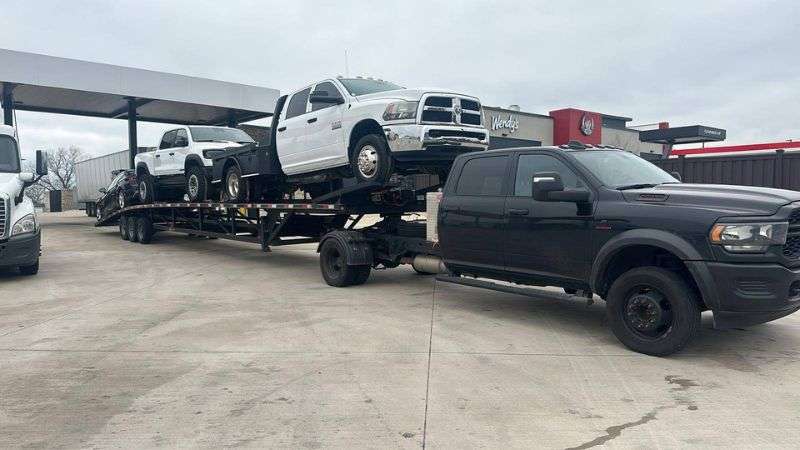Car Transport New York
Open & Enclosed Car Shipping · Towing · Hauling · New York/Interstate Car Shipping


Car Transport New York Prices
When it comes to car shipping, the cost can vary based on a multitude of factors. Every vehicle and route is unique, which is why consulting with a transport specialist is crucial to get an accurate estimate.
While online car shipping cost calculators can be convenient, they may not always provide an accurate representation of the final cost.
It’s also important to be cautious of lowball prices, as they could potentially hide additional fees or lead to unexpected price increases after signing the contract.
By working closely with a transport expert, you can ensure a smooth and transparent car shipping process without any surprises along the way.
| Type of Car | The shipping cost is influenced by the type of car that you want to transport. Larger vehicles such as SUVs and trucks incur higher shipping costs because of their size and the fuel and labor needed. Due to their size, larger vehicles take up more space on transport trucks, leading to higher expenses. |
| Car condition | The shipping process is impacted by the overall condition of your car. Inoperable vehicles call for extra equipment and labor to ensure secure transportation. Vehicles unable to independently drive onto carriers will need specialized equipment such as a winch for loading and unloading. |
| Distance | The distance of the shipment is one of the main factors in calculating the cost of car shipping. Longer distances typically result in higher costs because of the increased fuel and labor needed. |
| Type of carrier | The method of transport or type of carrier influences the overall cost. Open transport, where vehicles are shipped on open trailers with others, is more cost-effective. Enclosed transport, where vehicles are shipped in closed containers, is pricier but provides better protection. |
| Seasonal fluctuations | Seasonal variations greatly impact car shipping costs. High demand during peak summer months can lead to price hikes. Conversely, lower demand in the off-season may result in reduced prices. However, adverse weather conditions such as heavy snow in winter can cause delays and increased expenses. |
| Fuel price | Fluctuations in fuel prices can directly impact the overall cost of transporting a vehicle. Higher fuel prices can result in increased shipping costs as carriers pass on these expenses to customers. On the other hand, lower fuel prices may lead to more competitive rates for car shipping services. |
Cheapest Car Transport New York
So what is the best way to keep car shipping cost to a minimum? If you keep a few things in mind, you can avoid unnecessary costs for transport.
Opt for open transport: The standard and most economical way to ship cars in the industry.
Ensure your car is operable: Carriers charge extra for handling inoperable vehicles, so make sure your car runs and drives.
Plan ahead: Booking in advance helps avoid expedited or last-minute fees.
Keep your schedule flexible: A flexible schedule often leads to more budget-friendly quotes.
Consider low-season transportation: Shipping a car is usually cheaper during winter compared to summer.
Choose major city locations for pickup and delivery: If you live in a rural area, arranging for car pickup and drop-off near a major city can be more cost-effective.
Transport multiple cars: Shipping more than one vehicle on the same truck can result in savings.
Inquire about discounts: Active military members, seasonal travelers, or repeat clients may be eligible for discounts.
Alabama — Alaska — Arizona — Arkansas — California — Colorado — Connecticut — Delaware — Florida — Georgia — Hawaii — Idaho — Illinois — Indiana — Iowa— Kansas — Kentucky — Louisiana — Maine — Maryland — Massachusetts — Michigan — Minnesota — Mississippi — Missouri — Montana — Nebraska — Nevada — New Hampshire — New Jersey — New Mexico — New York — North Carolina — North Dakota — Ohio — Oklahoma — Oregon — Pennsylvania — Rhode Island — South Carolina — South Dakota — Tennessee — Texas — Utah — Vermont — Virginia — Washington — West Virginia — Wisconsin — Wyoming
Got more questions?
We can help.

